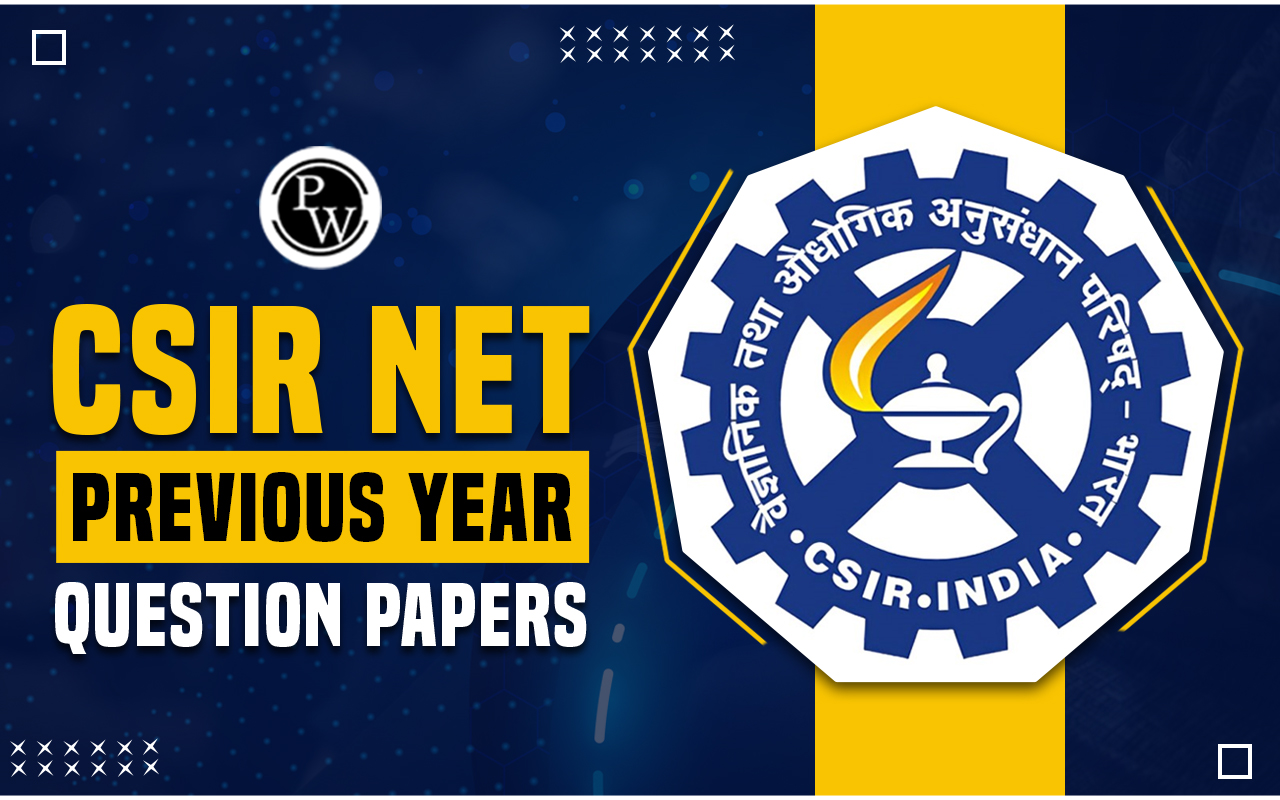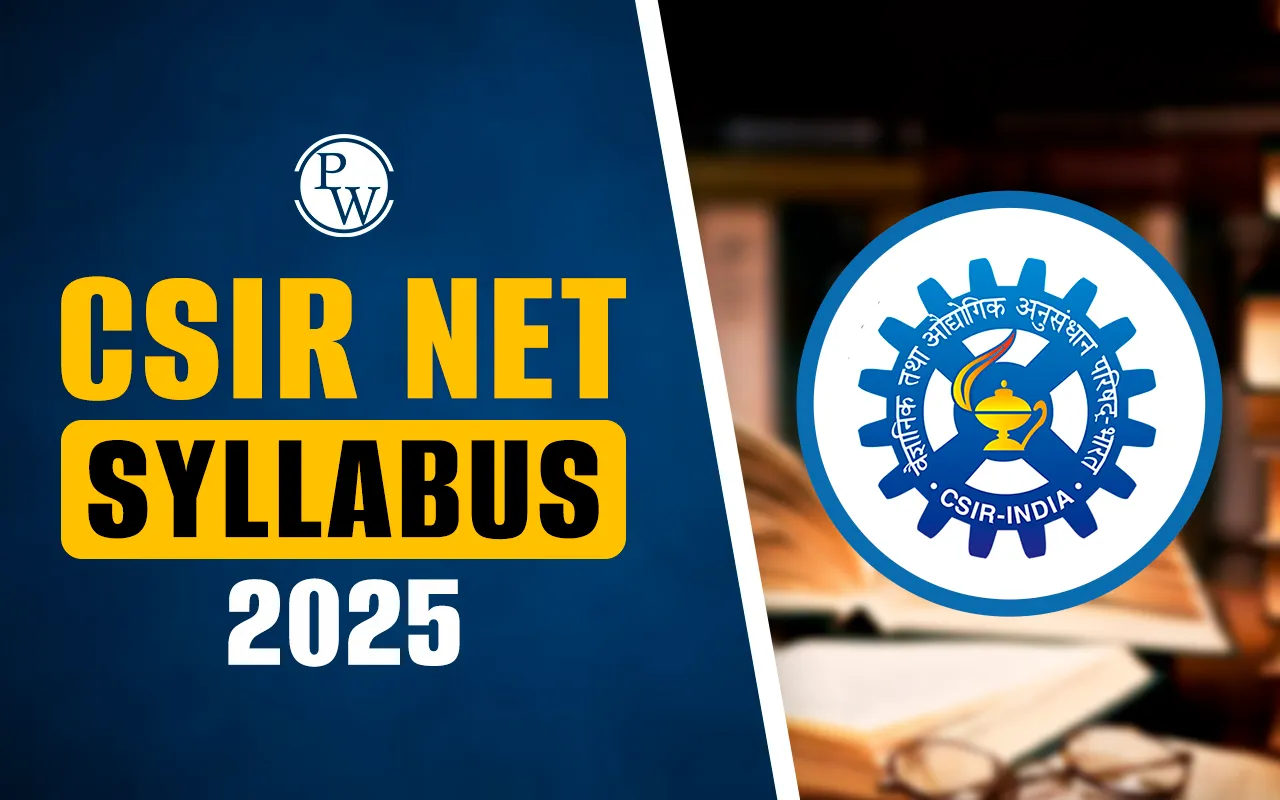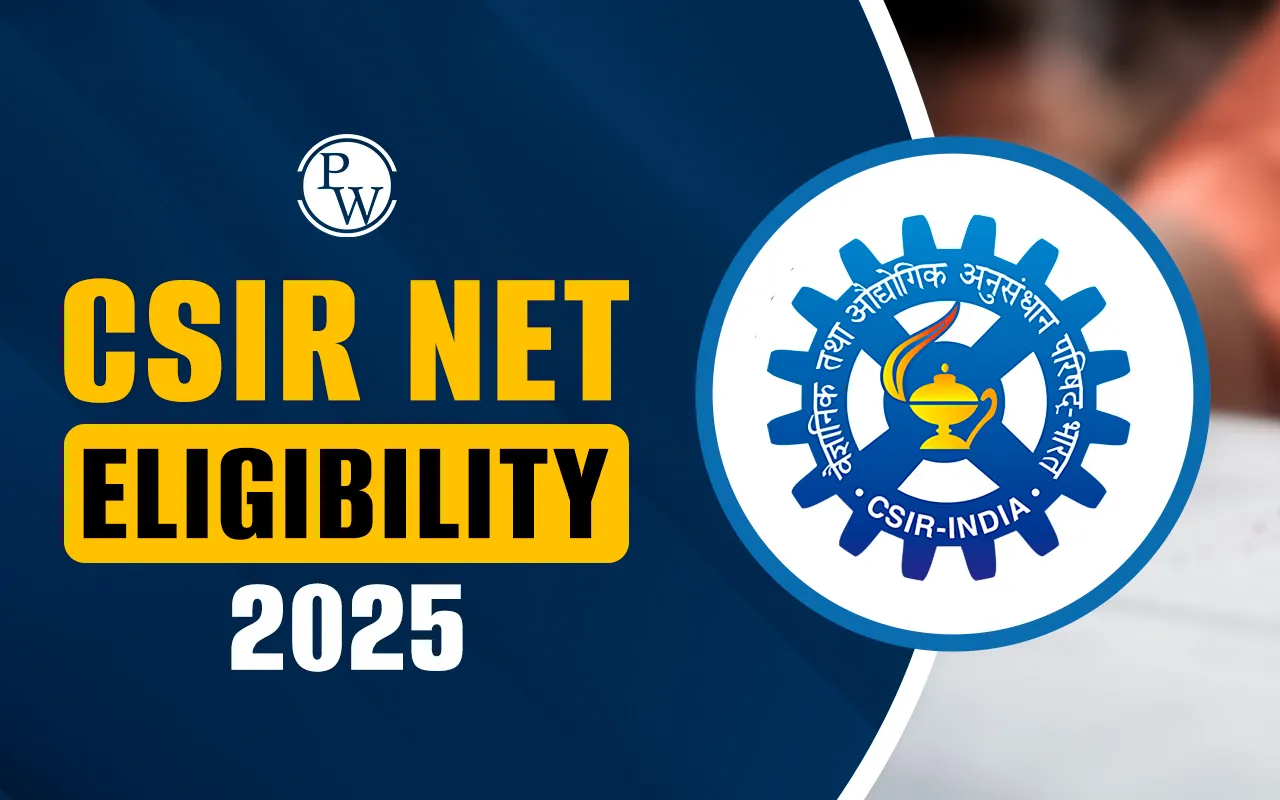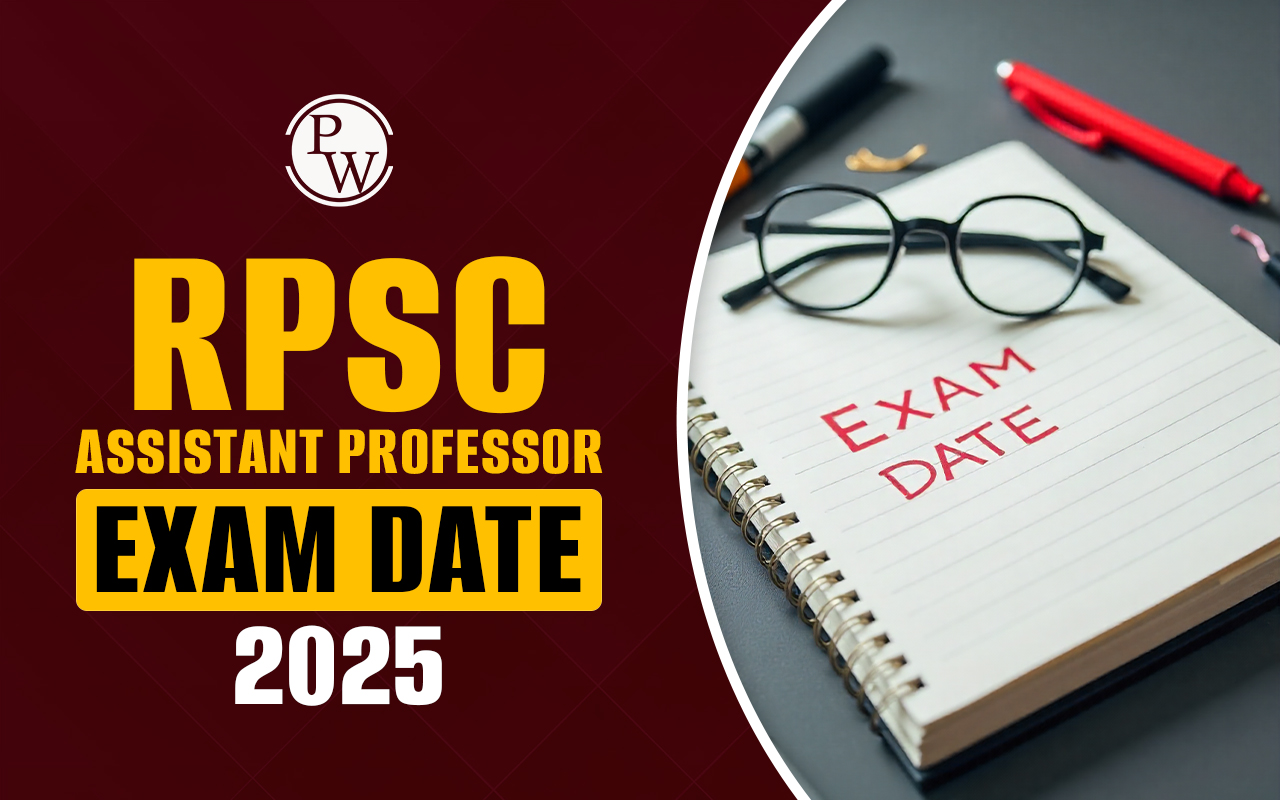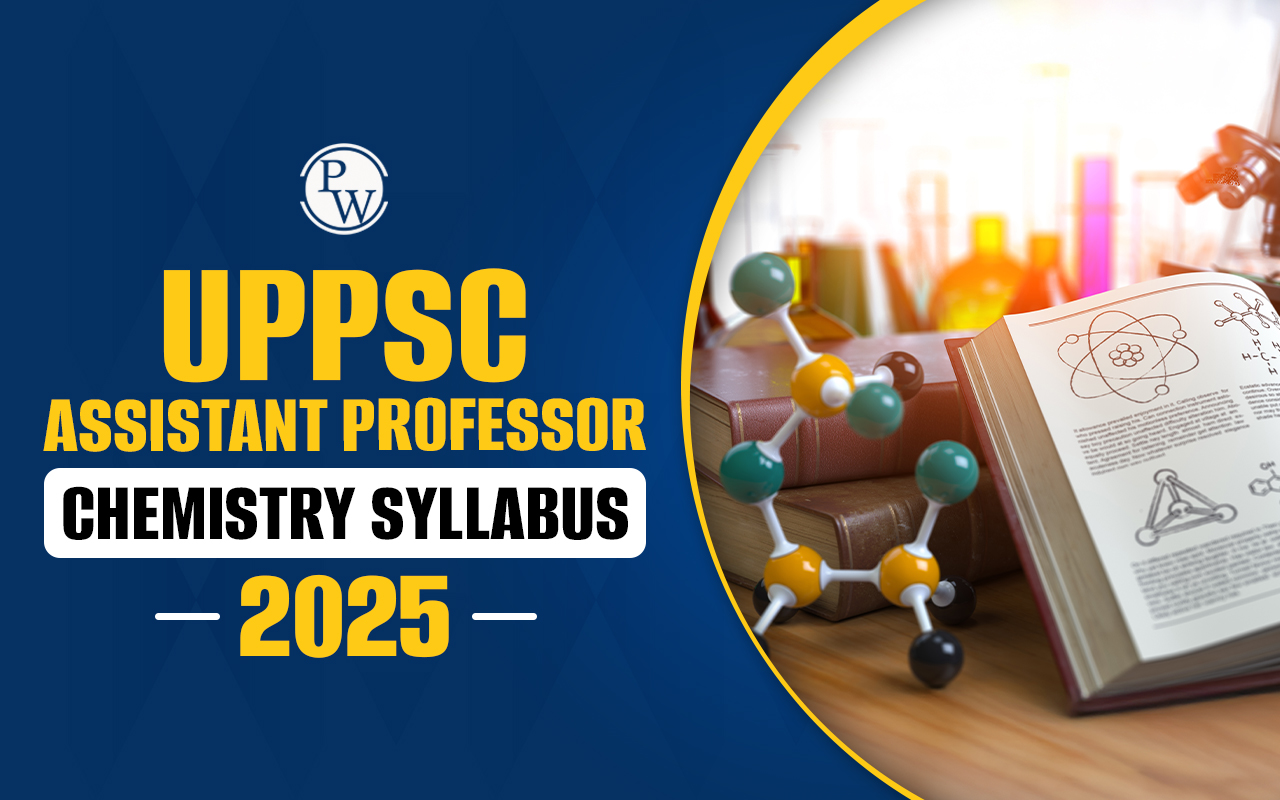

UPPSC Assistant Professor Physics Syllabus 2025 is set to test the knowledge of the candidate and check their understanding of fundamental and advanced concepts in Physics. Important areas of focus include Mathematical Physics, Electronics, Solid State Matter Physics, and Nuclear Physics. A complete understanding of this syllabus is very important for aspirants who are preparing for the UPPSC Assistant Professor Recruitment 2025.
Apart from the core Physics subject, candidates are also required to prepare for a General Studies paper, which is a mandatory component of the written examination. Familiarity with the complete syllabus and exam pattern helps candidates create a strategic study plan, ensuring comprehensive coverage of all important topics to get success in this competitive exam.
UPPSC Assistant Professor Physics Syllabus PDF
To prepare efficiently, candidates are advised to download the official UPPSC Assistant Professor Physics Syllabus PDF. Going through the syllabus completely helps to get a complete idea about the scope of the topics. Planning a study schedule accordingly gives a competitive edge. Having the syllabus handy allows you to create an effective study plan, cover all essential topics, and focus on priority areas.
For convenience, candidates can also download the syllabus using the direct link provided below:
Download UPPSC Assistant Professor Physics Syllabus PDF
UPPSC Assistant Professor Physics Syllabus 2025 Overview
UPPSC Assistant Professor Notification 2025 has been released for aspirants looking to secure a teaching position in Uttar Pradesh's government degree colleges. For a comprehensive understanding of the examination, the detailed syllabus information is provided here. Candidates can get a quick overview from the information tabulated below.
UPPSC Assistant Professor Physics Syllabus 2025 Overview |
|
|
Particulars |
Details |
|
Post Name |
Assistant Professor (Physics) |
|
Recruiting Body |
Uttar Pradesh Public Service Commission (UPPSC) |
|
Exam Stages |
Preliminary Written Test and Interview |
|
Written Exam Marks (Prelims) |
150 Marks |
|
Paper I (General Studies) |
30 Questions - Covers General Science, Current Events, History, Geography, Polity, Economy, and Mental Ability. |
|
Paper II (Physics) |
90 Questions - Covers PG-level Physics topics like Classical & Quantum Mechanics, Electromagnetic Theory, Electronics, Solid State Physics, and more. |
|
Total Questions |
120 Objective (MCQ) Questions |
|
Exam Duration |
2 hours |
|
Interview Marks |
25 Marks |
|
Negative Marking |
To be announced in the official notification. |
|
Syllabus Level |
Postgraduate level Physics, General Studies basics. |
|
Exam Mode |
Offline (Pen and Paper). |
UPPSC Assistant Professor Physics Syllabus 2025 Details
The syllabus announced in the official UPPSC Assistant Professor Notification 2025 is divided into two parts: Paper I (General Studies) and Paper II (Physics). The Physics paper assesses the candidate's subject matter expertise at the postgraduate level.
UPPSC Assistant Professor Paper I: General Studies
This paper is a compulsory component of the preliminary exam and consists of 30 objective-type questions set to check an overall awareness. The syllabus covers a wide range of subjects relevant to national and international importance. As per the syllabus, candidates are expected to have a general understanding of these topics with special reference to Uttar Pradesh. General awareness topics, include:
-
Current Affairs (National and International)
-
History of India and Indian National Movement
-
Geography of India and the World
-
Indian Polity and Economy
-
General Science
-
Elementary Mathematics up to 10th standard
UPPSC Assistant Professor Paper II: Physics Important Topics
Paper II is the main paper for Physics candidates, which is specific to the subject. It comprises of 90 questions in the preliminary exam. The syllabus is comprehensive and divided into ten units. The topics are set with a balance to completely test a candidate's knowledge at the postgraduate level. The syllabus details for the main subject, Physics, is provided below:
|
UPPSC Assistant Professor Paper 2: Physics |
|
|
Unit |
Topics Covered |
|
Mathematical Methods of Physics |
Vector algebra and vector calculus, linear algebra, matrices, special functions (Hermite, Bessel, Laguerre, and Legendre), Fourier series, Fourier and Laplace transforms, complex analysis, and elementary probability theory. |
|
Classical Mechanics |
Newtonian mechanics, Lagrangian and Hamiltonian formalisms, central-force motion, two-body collisions, rigid body dynamics, special theory of relativity, Lorentz transformations, relativistic kinematics, and mass-energy equivalence. |
|
Electromagnetic Theory |
Electrostatics, magnetostatics, Maxwell's equations, propagation of electromagnetic waves, reflection and refraction, dispersion, wave guides, radiation, and Poynting vector. |
|
Quantum Mechanics |
Wave-particle duality, Schrödinger equation, postulates of quantum mechanics, hydrogen atom, angular momentum, perturbation theory, and elementary scattering theory. |
|
Thermodynamic and Statistical Physics |
Laws of thermodynamics, thermodynamic potentials, Maxwell relations, kinetic theory of gases, phase space, ensembles (micro-canonical, canonical, and grand-canonical), Bose-Einstein and Fermi-Dirac statistics. |
|
Electronics and Experimental Methods |
Semiconductor devices (diodes, transistors, FETs), operational amplifiers and their applications, digital electronics (logic gates, combinational and sequential circuits), and data acquisition and analysis. |
|
Atomic & Molecular Physics |
Quantum states of an electron in an atom, electron spin, Stern-Gerlach experiment, fine and hyperfine structure, L-S and J-J coupling, Zeeman, Paschen-Bach & Stark effects, and molecular spectra. |
|
Solid State Matter Physics |
Crystal structure, Bravais lattices, diffraction and the reciprocal lattice, bonding of solids, lattice vibrations, free electron theory, band theory of solids, and basics of superconductors. |
|
Nuclear and Particle Physics |
Basic nuclear properties (size, shape, binding energy), nuclear models, radioactivity, nuclear reactions, particle detectors, classification of elementary particles, and fundamental forces. |
|
Topic of Special Interest |
Covers advanced and contemporary areas including dosimetry, nanostructured materials, graphene, carbon nanotubes, modern energy devices (solar cells, batteries), and the physics of advanced sensors and optical fibres. |
UPPSC Assistant Professor Physics Exam Pattern 2025
Candidates should familiarize themselves with the UPPSC Assistant Professor Physics Exam Pattern to understand the structure of the question paper, marking scheme, and duration. The selection process consists of a written test followed by an interview. The detailed exam pattern is presented in the table below:
|
UPPSC Assistant Professor Physics Exam Pattern 2025 |
|||||
|
Stage of Exam |
Type of Exam |
No. of Questions |
Marks Distribution |
Total Marks |
Duration |
|
Preliminary Exam |
Objective (MCQ) |
120 |
30 (General Studies) + 90 (Physics) |
150 |
2 Hours |
|
Main Exam |
Written / Descriptive |
20 |
10 Short-Answer (8 marks each) + 10 Long-Answer (12 marks each) |
200 |
3 Hours |
|
Interview |
Personality Test |
N/A |
N/A |
25 |
N/A |
Final Merit Calculation: The final ranking of candidates is determined by the sum of marks from the Main Exam (200) + Interview (25) = 225 Marks. The preliminary exam is a qualifying stage only.


